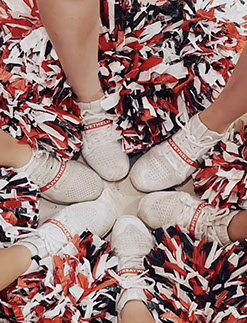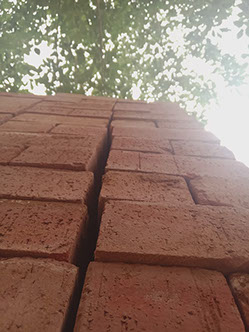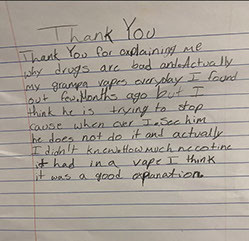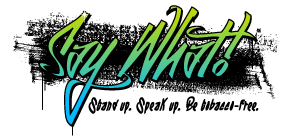

List of Photos

Listen here
This photo of cheerleading shoes embodies community. The community that is free of nicotine and fully enjoys what they can do the best - cheerleading. Even how our toes are pointing and touching signifies unity. Leadership to me means taking change into your own hands, stepping up to a role where you can empower yourself and the people around you towards a common goal. Sometimes, leadership is not about being at the front lines, telling people exactly what to do, but believing in your peers. Trusting them with a presentation, trusting them that they’re going to go out there and teach the lesson as well as you are. Leadership is about creating communities, creating power within those communities to go out there and create even more impact. Expand and quadruple it and multiply it as much as possible because the more, the merrier. So to me leadership is all about teamwork, and if you don’t believe in your team, then there’s no point in doing what you’re doing. You’re not a leader, you’re just doing your own thing. You’re a sole advocate.
Everyone comes in to Say What! was something different to offer. Some people come in and they’re already great speakers. Some people come in more shy, but are just very passionate. Some people may not know a lot about tobacco prevention but have a personal reason that they want to get involved. And for some people, it seemed like fun and they wanted to get involved. But no matter what baseline you start off with, Say What! develops all these big traits in you. They help you develop the leadership skills to be able to present. They help you develop the ability to speak, publicly. If you think that “I’ll never be able to present in front of a crowd”, you’re wrong. Say What! and your fellow team, ambassadors, consultants, everybody will help you be the best presenter you can be.
I think I’ve definitely grown because I was also one of those shy people. I never thought I’d really be talking for real in front of people and I’ve grown with my presentation skills, and just being able to be confident in my abilities and knowing that all these people have my back when it comes to everything that I have to do here. We don’t just present, run summits and conferences. We don’t just spit facts at them. That’s not how it is. We give our peers the resources, the planning tricks so they can do their own projects. We make them fun so that they can go and start their own efforts and advocacy. Together as a team, working towards a goal like that, that’s what community is.

Listen here
When I was thinking about addiction, and what needs to be done, I was thinking there needs to be more safety and more stable and serious regulations. Basically, action that goes into place to protect you and when I was thinking of something stable and solid, I was looking at bricks and thought “Perfect, this is it.” It’s just the angle of these bricks and how they’re just so put together and it’s stable. Bricks are usually used for walls. Stable and solid, which is what you would want a community environment to be like. Each brick builds the wall. You have to have different pieces and like how people are putting these bricks together, creating stability in that wall. These were bricks that were waiting to be used. These are the pieces of the puzzle that haven’t been- used yet. But they still have their potential. I think it also shows the ultimate possibilities that it has since they’re not used.
The question of what needs to be done, the answer seems like to use that potential for stability and that potential for a strong community, a strong program. It needs to be used, these bricks, this potential power. Each brick is a person and we can help youth, guide them in a sense, to live a tobacco free life because we’re like mentors for them. We’re leaders. So we can help them find their place within the tobacco free area and prevention. We need to use the resources to build something that protects our youth from tobacco addictions.

Listen here
At the end of one youth group presentation, students wrote us thank you messages and here is one of them. This one reads, “Thank you for explaining to me why drugs are bad. And actually my grandpa vapes every day. I found out a few months ago, but I think he’s trying to stop because when I see him, he does not do it and actually I didn’t know how much nicotine it had in a vape.” This to me represents what Say What! is, because we’re all about educating youth about something people see in their daily lives, tobacco and nicotine use. We think it’s normal. Other people think it’s normal until you see how it affects your life, your grandparents’ life, the lives of people we love the most.
The recognition we receive after presentations and events is just a very fun part and a part that lets you know as a TA, an advocate, and as a leader that you’re making the change in people’s lives. It’s evidence that what we’re doing is working. After we did a presentation at my school, I would have elementary school students come up and say, “I remember you came with Say What!” and they’ll just tell me some little facts they remember, and it just really shows us that what we’re doing is good for everybody in our schools and our community.
Even when we don’t get things like this, I think we’re able to see the impact that we have in different ways. I presented to fourth graders, to fifth graders to middle school and to high schoolers and I’ve had people come up to me that I’ve never seen before that I don’t know and thank me and ask me for more information. Things like this are what keeps us going, and you just have to remind yourself the reason that you’re doing it and that you are making an impact.

Listen here
Say What! means building relationships. First of all, with your fellow teen ambassadors, even if y’all don’t stick together the whole time, if you only have one, two, or even four years together, the impact of the relationships you built extend beyond that to the relationships that you build with your audience, peers, with everything else.
I do love tobacco prevention but I also have love for all of the people that tobacco affects. Prevention starts with just one person, building relationships with more people all across the state and even beyond that. I just think the longer you spend with somebody, the stronger your relationship gets. Even though we only see each other a few times a year, I think our relationship will always be held together by our passion. If we have that love for what we do, it’s something that will last forever.
If I had all the power in the world and money to continue tobacco prevention, I would just get more amazing people to join me. I mean, what else can you ask for? I think people are any organization’s number one resource. I would definitely invest in more people who are as passionate and willing to invest the time and willing to do all the things that we do in order to teach people about this issue.
Say What! EST. 2011
Phone
512.245.8082
Mailing Address
Texas School Safety Center
ATTN: Say What Program
Texas State University
601 University Drive
San Marcos, TX 78666


Say What! was created and designed by young people from across Texas and connects students interested in eliminating tobacco from their schools and communities. The Say What! movement is funded by the Texas Department of State Health Services through a contract with the Texas School Safety Center at Texas State University.










